New AMPV armored vehicles have replaced half a century-old armored personnel carriers.
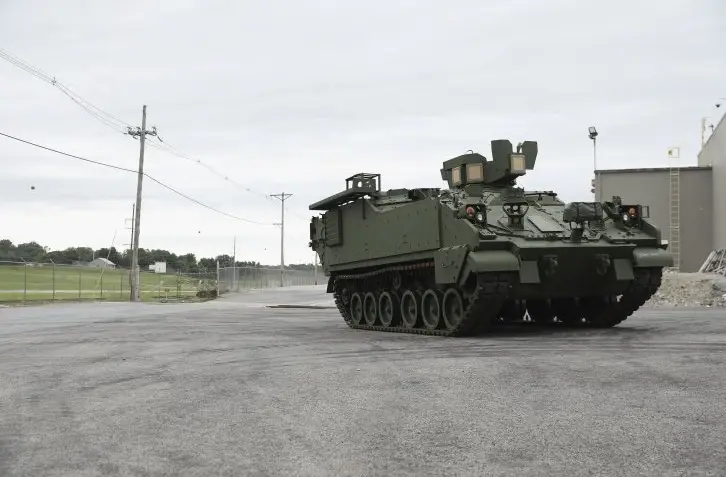
The first production M1283 armored personnel carrier before delivery to the customer, August 2020. Photo by BAE Systems
At the beginning of the last decade, the Pentagon made another attempt to update the fleet of armored combat vehicles of the ground forces. The AMPV (Armored Multi-Purpose Vehicle) program was launched, the goal of which was to develop and bring to series a promising unified platform and several types of armored vehicles based on it. To date, the AMPV project has been brought to full-fledged mass production, and the re-equipment of parts has already started.
Perspective replacement
The US Army still has a large number of M113 armored personnel carriers and equipment based on them. This platform, despite all the modernizations, has long been obsolete and required replacement. Several attempts have been made in the past to create a new unified chassis, but none of them led to the desired results.
In 2013, the Pentagon launched a program to develop a new platform and equipment based on it under the general name AMPV. At that time, it was assumed that the coming years would be spent on creating the project, and by the beginning of the next decade, mass production would begin. In total they wanted to build approx. 2,9 thousand new armored vehicles of several models. The cost of cars of different models differed and should not exceed $1,8 million. They wanted to spend no more than $4,7 billion on the entire construction.
At the end of 2014, BAE Systems received the contract for the work. She had to complete the development of the previously presented project, as well as set up and launch the production of experimental equipment. More than $380 million and 52 months were allocated to carry out all these activities.
The contract provided for the development of the AMPV platform itself, as well as five vehicles for various purposes based on it. The army wanted to receive the XM1283 General Purpose (GP) armored personnel carrier, the XM1286 Mission Command (MCmd) command and staff vehicle, the XM1285 Medical Treatment Vehicle (MTV), the XM1284 Medical Evacuation Vehicle (MEV), as well as the XM120 1287-mm self-propelled mortar Mortar Carrier Vehicle (MCV).
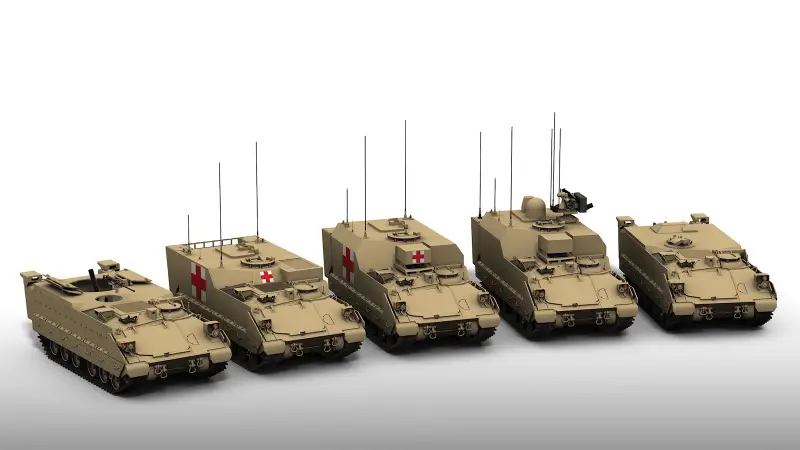
Armored vehicles of the AMPV family (from left to right): Self-propelled mortar XM1287, medical vehicles XM1285 and XM1284, KShM XM1286 and armored personnel carrier XM1283. Photo by BAE Systems
According to the first contract, BAE Systems was to build 29 prototypes of all five types for testing under different conditions. The first armored vehicle of the experimental batch was handed over to the customer in December 2016, and the last batch was shipped in April 2018. Without waiting for the delivery of all the equipment, the Pentagon began a test program in September 2017.
Low rate production
Testing of the resulting vehicles lasted less than a year and a half. During this time, it was possible to establish the real characteristics and parameters of the equipment of all models and their compliance with customer requirements. Based on the test results, at the beginning of 2019 the Pentagon moved the AMPV program to the next stage. Now we were talking about launching mass production.
At the beginning of 2019, BAE Systems received a new order from the military department worth $873 million. It was required to begin “low rate initial production (LRIP)” and produce 457 units. equipment of all models.
It took about a year to launch the production line and assemble the first batch of armored vehicles - the customer wanted to receive finished products in March 2020. By the end of FY 2020. (by October) they demanded the delivery of 258 combat and auxiliary vehicles. For FY2021 They planned to produce 143 cars, and the remaining 2022 for the first months of 56. After this, the start of a full-fledged series was expected.
The development of mass production encountered some problems. In particular, BAE Systems referred to the coronavirus pandemic and related difficulties. Because of this, the first AMPV armored vehicle in the configuration of the M1283 armored personnel carrier was delivered to the customer only in September 2020 - six months later than the planned date. The plan to assemble 285 cars by the end of the financial year was also disrupted.
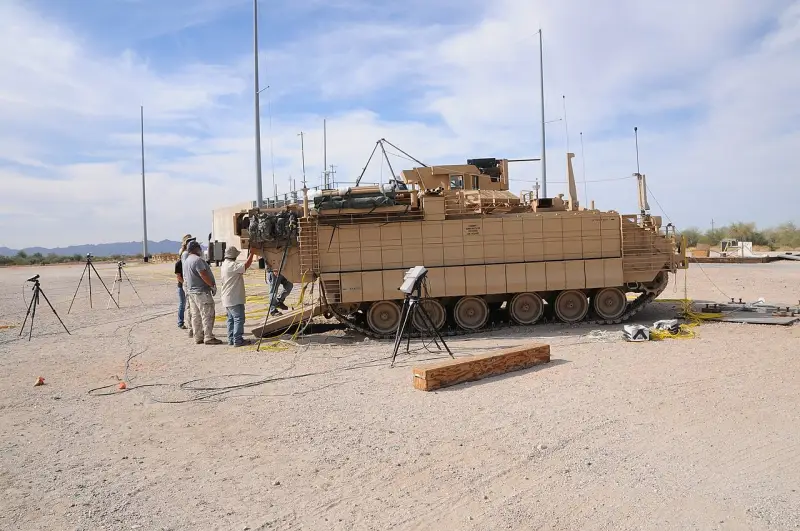
A prototype armored personnel carrier undergoing testing, October 2017. Photo by the US Department of Defense
Due to the setbacks of 2020, the Pentagon and Congress have had to adjust plans for the next fiscal year. Thus, the equipment supply plan was reduced from 143 units. to 32. The budget for the work was reduced from $445 million to $193 million. Plans for the following periods were revised accordingly.
It was possible to fulfill the order for the production of LRIP only in mid-2023. The army received the desired vehicles of all modifications and began distributing them between units and formations. In addition, it became possible to launch full-scale mass production.
Armored vehicles in the series
At the beginning of August 2023, the Pentagon announced the start of the series. Despite all the difficulties and delays, BAE Systems was able to set up the production line. Now it is ready to fulfill full-scale orders and to ensure the rearmament of ground forces.
According to reports ten years ago, the US Army required 2907 AMPV armored vehicles of all modifications. Later, it was proposed to revise and reduce such plans, but the Pentagon managed to defend the rearmament program in its original volumes. In 2018, before the launch of LRIP, the previous volume of the production program was approved and has not been adjusted since then.
Under the terms of the contracts issued, BAE Systems will have to build at least 300 AMPV armored vehicles of various modifications annually. To fully implement previously approved plans, it will have to assemble 2450 serial products. If the required production rates are met, it will take a little over 8 years to produce such a series. However, deviations from the planned rates in one direction or another cannot be ruled out with changes in production volumes and timing.
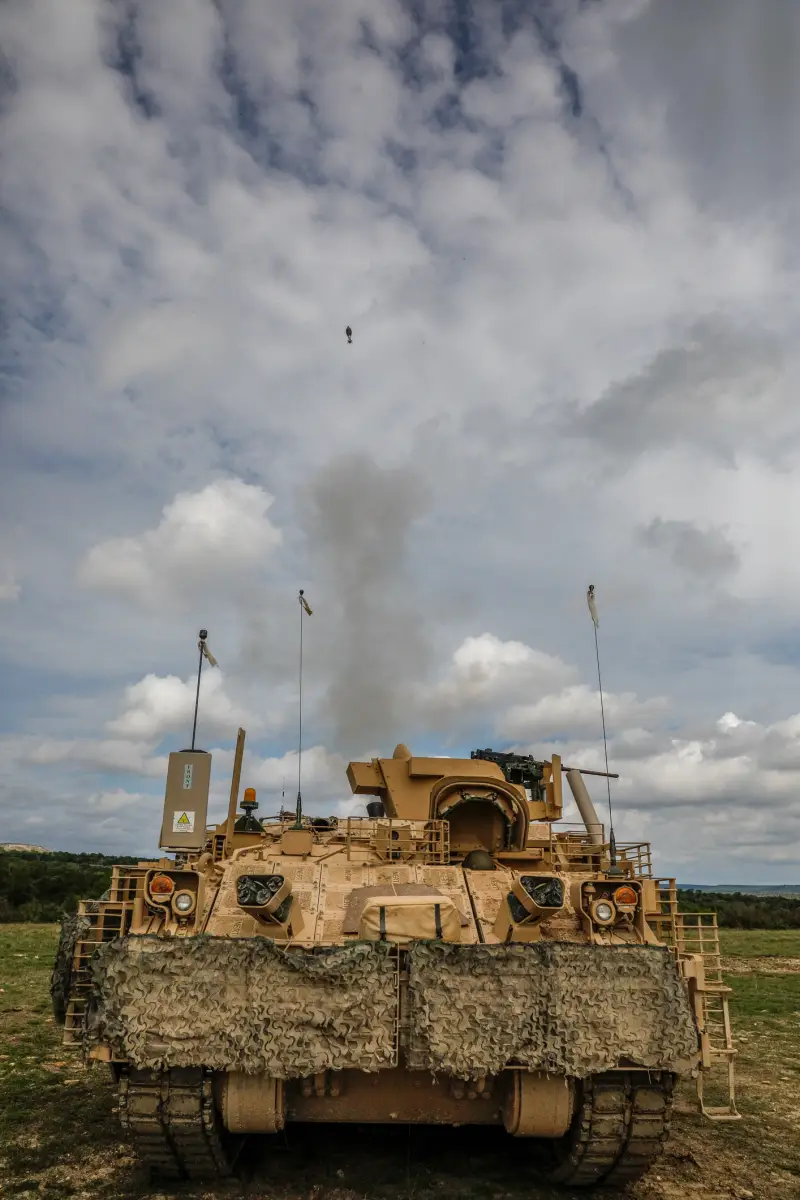
Firing tests of the XM1287 self-propelled mortar, September 2018. Photo of the US Department of Defense
At the request of the customer, the executing company had to create a reserve of production capacity for the “mobilization” expansion of equipment production. It was not reported how much the production rate should increase in this case. At the same time, it is clear that accelerating production will allow us to fulfill all plans faster.
It cannot be ruled out that in the future the Pentagon will issue additional orders to BAE Systems for the production of new batches of AMPV. Thanks to them, the department will be able to increase the overall size of the army’s equipment fleet, replacing a larger number of outdated materiel, as well as compensate for wear and tear or losses of serial armored personnel carriers and other vehicles.
Start of rearmament
The AMPV family of armored vehicles is intended to replace outdated M113 armored personnel carriers and vehicles based on them in units of ABCT (Armored Brigade Combat Teams) armored brigades. Each such brigade has 114 units in the state. M113 and their derivatives. They want to replace 2897 old armored vehicles - more than 25 brigade sets. For this purpose, 2907 new AMPVs will be built, and we are talking about an almost equivalent replacement.
Experimental armored vehicles of the new family underwent military tests in units of the 2nd ABCT of the 1st Cavalry Division, serving at the Fort Hood base in Texas (now Fort Cavazos). At this stage, representatives of other units and formations also became familiar with the equipment. At the same time, full adoption and entry into service remained a matter of the future.
The first brigade set of AMPV armored vehicles of all models entered service in March 2023. It was received by the 1st ABCT of the 3rd Infantry Division at Fort Stewart (Georgia). It has not yet been announced where the other vehicles from the LRIP series will go. Also, plans for the supply of full-fledged serial armored vehicles, the assembly of which began last year, have not been specified.
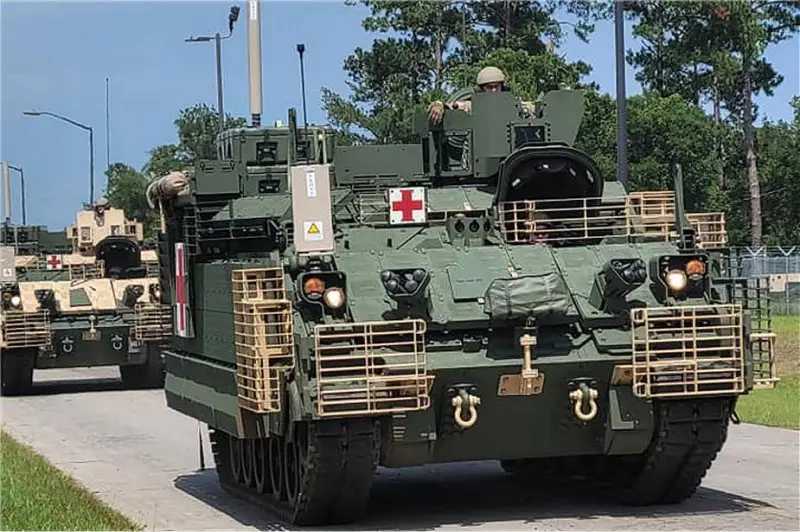
Medical equipment being tested, 2022. Photo of the US Department of Defense
However, the results of all these processes are already clear. Over the next 8-10 years, more than two dozen ground brigades will update their fleet of armored vehicles. At the same time, they will receive new armored personnel carriers, self-propelled mortars, military vehicles and medical vehicles. It was reported that units stationed both in the United States and at foreign bases will undergo rearmament.
With a vision for the future
The M113 armored personnel carrier and the equipment based on it have long been obsolete and are in need of modern replacement. A new line of armored vehicles for this has already been developed and brought to full-fledged mass production. In addition, finished equipment is supplied to the troops and mastered by combat units. Overall, the Pentagon and its contractors have reason to be proud, albeit with some reservations.
Now the task of industry and the military department is to produce two and a half thousand serial armored vehicles and re-equip two dozen brigades. This will take the next few years, and deliveries may take until the early thirties. However, such a long wait is considered acceptable and justified. The fleet of new equipment will serve for the next several decades, and in this situation the priority is the quality of work, not the speed of its completion.
Information